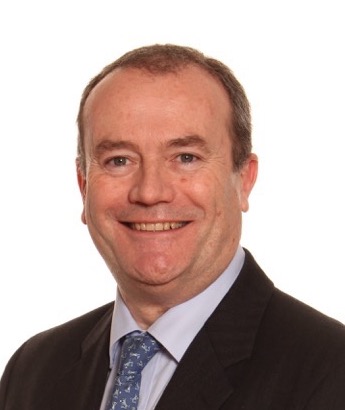Puzzled by credit risk insurance? (part two)
In the second instalment of a two-part roundtable sponsored by Texel, we explore what new strategies banks would like from CRI providers, what those providers are developing and whether CRI could have a role in helping lenders finance new asset classes at an earlier stage of market development.

The benefits of credit risk insurance (CRI) are well-known in project finance: completion of deals in excess of bank internal sponsor or deal specific credit limits; optimising use of banks regulatory capital; upping a bank’s ability to sole arrange and avoid introducing borrowers to potential bank competitors in syndication. But given the current unprecedented risk of project default worldwide, is CRI delivering on its promise and what more could it deliver going forward?
Texel and Proximo brought together a panel of experts from insurance, brokerage, commercial banks and DFIs to answer those questions and much, much more. If you ever had questions about CRI you are likely to find the answers below.
If you haven't already read part one of the roundtable please click here
Panellists:

Michael Silas – AXIS, Head of Capital Risk Solutions

Jan Weiss – IDB Invest, Principal Investment Officer

Simon Bessant – The Texel Group, Director

Daniel Borrego – EBRD, Associate Director, Loan Syndications

Lotte van Bijsterveld – ABN AMRO, Director, Loan Syndications

Andres Ortiz – Banco Santander, Managing Director, Global Head of Trade Asset Mobilization

Gerard Pieters – NordLB, Head of Origination Energy Europe, Structured Finance

Joe Blenkinsopp – AXA XL, Global Head of Market Development and Distribution for Political Risk, Credit & Bond Insurance
Proximo: What would end users like to see from insurance providers going forward? And what do you feel is not being provided that could be?
Andres Ortiz: Tenors [provided by insurers] are usually not an issue for us because we tend to not go too long by ourselves. But some additional capacity at times would help. And a clear framework with some of the stronger players, so that we know what sectors they will cover consistently, along with ratings and even margins. It would be good to know exactly what they will play along with and provide sufficient capacity for.
We would like to look at the potential for portfolio cover. As banks near the new credit cycle, risk weighted assets will be even more important than they have been, so a portfolio approach would be of great interest for us.
Lotte van Bijsterveld: It would definitely help if underwriters were more comfortable with undrawn debt – I guess that's more of a return point of view. Often the deals that we structure have at least six to seven-year tenors. For the first five years debt is being drawn down, and only in six and seven is there potentially a cash sweep. I completely understand where the insurance market and underwriters are coming from. But I think if they could get comfortable it would make it easier for us to take out more insurance.
Apart from that, I think the processes that we've gone through have gone relatively smoothly in terms of doing due diligence. And we haven't really run into a whole lot of trouble with tenors.
Gerard Pieters: NordLB operates in a relatively conservative space of the market, so we are not typically present in higher risk, higher yielding assets. We have many decades of experience and that's made us very comfortable with the risks we're in. In renewables in Europe for example, you can see what banks charge for the risk – it's not very high and there's good reasons for that backed by a host of data points. Conversely, insurers might see that same sector as very long tenor with very low pricing. So, in a sense, we're coming from different perspectives. I spend a lot of time trying to explain how we got comfortable on the risk and the pricing. I do think there's a bit of education to be done – we found the same with institutional investors coming into the market.
Daniel Borrego: What we would like to see is some commitment to emerging markets and being able to stay for the long-term transactions. Some providers have limited, a little bit, their appetite in terms of tenor. We would like that to see that coming back and increasing.
Some insurers have asked us to work on a portfolio basis. That’s something that would have to be structured very carefully because adverse selection would be an issue. And the idea that development banks, which are relatively small entities, would pass on their portfolio to insurance providers or to non-originators on a systematic basis would be quite difficult because it would mean a complete change in how we work.
We have also heard there is an element of enhancement or first loss that may need to be made available for these structures to work. So to the extent that there is a first loss or donor component for these transactions to be attractive to the market, then that needs to be very carefully considered because the moment that you need a grant or a donor, then you're introducing an element of distortion into how the market works.
Simon Bessant: I think Andres and Daniel are talking about the sort of structures that we at Texel know very well. We have a team that look at structured and bespoke solutions and they've closed significant risk transfer transactions with insurance guarantees for commercial lenders.
For those types of structures, where you're putting risk into tranches and potentially offering insurers a more senior exposure with an acceptable risk return, the pool of insurers in that space will grow in the next 12 months, hopefully. Even today we're still able to gather a good amount of capacity to support those transactions for commercial lenders. Everybody saw the African Development Bank’s Room2Run securitization – for DFIs and multilaterals there is good appetite from the insurance market to partner to replicate that form of unfunded protection in the junior or senior mezzanine tranches, for example.
There's an understanding, certainly within a subset of the insurance market, as to the way of looking at these transactions, both on an actuarial and true underwriting basis and how to document them. It’s about getting both sides to come together which takes a fair bit of expertise and a lot of time. But it can be very beneficial for both sides as it can give a significant amount of risk weighted asset relief for the commercial lenders and I think would be very beneficial for the multilateral development banks because they can optimize and grow their balance sheet more frequently.
Proximo: From an insurer’s perspective, are there plans to offer more product going forward? And are you able to meet some of the requirements that have been outlined by our panellists?
Joe Blenkinsopp: On tenor, we don't have a problem -- we can go up to 20 years non-cancellable. So that caters for most of the project finance world that we encounter. We do have a preference to balance the risk and reward, so if it's a well-paying, well-structured facility, that may well be a better use of our capital than offering, say, to step into one with just significant construction risk, which would be perhaps a little more uncertain. But the devil's in the details and we look at these on a case-by-case basis.
We will constantly look at innovation – portfolio risk transfer is something we’re looking at. But ultimately, it’s about partnership with the insured, a strong insurer balance sheet and a clear, simple policy wording that triggers when the bad thing happens and we then honour a valid claim quickly, cleanly and efficiently.
Proximo: Does the type of financing make a difference to you. For example, on a project loan you're going to have very experienced banks, whereas on a project bond you've got a whole set of investors that may not completely understand the asset that they're investing in, particularly if it's preconstruction. Does that make a difference?
Joe Blenkinsopp: Yes – ultimately, the parties involved are going to make a huge difference as to what happens when a project gets into difficulty. I think there are some very good funds out there that know exactly what they're doing. Equally, there's a whole host of capital, which is just looking for a return. The latter group is more difficult for some CRI providers to get involved with in a significant way.
Michael Silas: We're happy to go up to 20 years – most of the transactions that we get involved in are crossover credits to the operational phase, so you really don't see those tenors going out beyond 20 years. PPP in developed markets is one area of the book where we'd like to participate, but with tenors of 20-years-plus it's not appropriate for us given the market dynamics.
On undrawn debt, we're OK with the build-up of exposure during the construction phase, so that's not something we’re looking to avoid in any way and has not been an impediment to our risk appetite.
What has been an impediment, and this is outside of project finance, is providing credit protection on unfunded loans. Those are things that banks don't like to provide or keep on their balance sheet. They do it because they have to but they're not priced very well. They only get drawn when the credit gets worse, and in the current climate they're all being drawn today. We’ve avoided this part of the market.
Now lenders want credit protection on these unfunded loans and things that are about to be drawn. We’re more than happy to have conversations but that is obviously a risk conversation and a pressing one. We haven't saddled our balance sheet with credit limits that were undrawn, so therefore we're ready to go. We are having very positive conversations with people about undrawn facilities that are happy to pay drawn pricing, whether it's drawn or not drawn, because they're solving risk weighted asset issues now or three months down the line. As long as we’re comfortable with the risk and return front, we're happy to support our customers.
We are also interested in significant risk transfer (SRT), but given the standards we hold ourselves to with respect to forecast scenarios, which are frankly challenging for single transactions, to attempt to do this across a portfolio of project finance or any kind of complex assets will generate a sufficient amount of uncertainty that I don't believe it will be a good use of our time or capital – at least not now. For us, we'd really like to help our customers on transactions where we think there's a high likelihood on our side to execute and on theirs.
To look at pricing, I do think pricing for project finance loans will probably go up a little bit. Most of the time we agree with the pricing. Most of the time we can get an appropriate share of the margin. The challenges come from a couple of areas. One is cost of funds, where the debt margin is so low, after taking into account cost of funds there is little room for credit risk insurance. The second is where there's a mismatch in the credit view of our customer and ourselves. When that happens, our pricing needs go up. We resolve that by having a greater level of transparency with our customer who, most likely, will have much greater expertise than us in the project space. Their experience can enable us to consider the project a higher quality risk and therefore we can adjust our pricing expectations.
And there are other different takes that affect pricing – do you start with an offtaker credit rating and notch down, or do you start with a country's ceiling rating and notch up? Sometimes those world views are difficult to match up.
We found that pricing in European offshore wind became very thin. We continued to execute even as projects entered the operational phase, but any further movement on the pricing and we would have had to walk. Thankfully, it didn't quite get there and there are other parts of the world where the expertise that we have built up over the last decade has helped – for example, we're actively involved in the Taiwan buildout.
Proximo: You were talking about transparency. Do you struggle with that? Why would a bank not make the process straightforward if it is their interest?
Michael Silas: If I could put a little more colour to what partnership is – it’s a willingness thing; a cultural thing. I think that insurance companies and buyers end up selecting markets where there's an overlap in culture and an overlap in needs and wants. That is how it works with our customers – so we don't have an issue with transparency.
There are a handful of spaces in the world where we feel we have sufficient expertise to join a transaction regardless of who our insured is. But because we're running a global book of project finance with every asset type (except PPP), we can't be expert at all those things. What we can do is bring a thoughtful methodology that allows us to understand the risk that we're taking and talk with our customers to allow them to attract us into new asset classes as well as into new countries. That's what we're open to and that's the partnership we want. It’s a strategy that has recently led us into doing a deal in Myanmar.
Proximo: To look at some of those points in more depth from a bank perspective, what are the key differences between CRI providers and lenders in how they assess risk and pricing expectations? And how might the whole process become a smoother, more transparent negotiation?
Lotte van Bijsterveld: What often happens is that the banks first decide for themselves which price they want to propose to clients, and we check our own internal models to see if a certain pricing will work – that's when we go for our credit risk approval and capital allocation approval. And that's also usually the moment when deal teams suddenly think they might need insurance to get those approvals.
So, once we approach the insurance market, the pricing is almost always a given already. Looking to the future, and if bank dependency on the insurance market increases over time, it might be a good idea to check with underwriters first on their appetite, because that's another parameter that we can then take into account before proposing our ultimate pricing to the client.
There are certain sectors that price incredibly competitively, where it will be very difficult to get underwriters interested. If I look at wind farms, margins are very low – we're barely making our internal hurdles, let alone insuring part of it and then paying away say 70% of our margin.
The sweet spot for insurance, if I look at the deals that we usually put forward, are the ones that are rated around triple-B minus or lower, with a margin of at least 150 basis points, but preferably over 200. Those are often the deals that either carry more risk or are unsecured, so there's a really narrow space where a deal’s pricing works for both insurers and lenders. And I think we just have to keep that dialogue going.
With renewables pricing getting ever cheaper, and if there's increased pressure on RWA that forces banks to get cover for these type of low margin deals more often, the pricing discussion should really happen sooner than later. The problem is that the banking market, even within the European Union, has very different return models. Take French, German and UK banks – the way that they're RWAs are calculated; the way that their books are put together; it's so different that there will never be a time where all banks are aligned and tell clients we need higher pricing.
So the moment ABN AMRO proposes higher pricing because we need it, and because we need to get the interest of underwriters, we will just lose the deal to other banks. And that dynamic is constant in the banking markets. So chances are we won't approach insurers because using them is mostly driven out of an RWA-related need for us.
Andres Ortiz: I totally agree with Lotte's comments. There are some lessons we can learn from engaging earlier with our project finance syndicate. And we need to get an agreement on what is and is not reasonable with insurers – the margin they need on top of the cost of funds.
In the bank, our focus is on profitable origination and if possible, on making distribution economically attractive, as well. Thus we push to get capacity and try to be as flexible as possible. We do have our own constraints on cost of capital relief. And I'm guessing that we all have similar challenges.
Jan Weiss: We have all the same issues everyone else does. Insurance doesn't drive our pricing – our pricing is derived from the market and what it takes to do a transaction. But obviously we hope to have insurers that work with us to ensure that transactions make sense from everyone's perspective.
A lot of insurers come back and say we want X percent of your margin. We prefer to understand what the insurers will need and try to do a bottom up kind of pricing from the market. But having said that, we understand that we operate in some difficult markets and so sometimes we need to provide a little bit of guidance to the insurers as well. Given our rating, cost of funds isn't necessarily an issue for us which certainly helps when it comes to pricing.
Proximo: Relatively new asset classes – fibre, EV charging, storage and data centres for example – have struggled to generate project finance appetite from banks initially. Could CRI provide banks a way of offsetting risk and getting into new markets earlier at a competitive price?
Gerard Pieters: The transition from a carbonised to a decarbonised world is going to require many new types of infrastructure and we're very keen to be involved. But you need a revenue model that you can bank project finance against. Project finance requires stable cash flows and historically pathfinder deals have been backed by high investment grade offtakers or even governments. Of course, that's difficult to replicate in something like data centres. If you have a very highly credit rated counterparty and the data centre has a full-term contract, then you can take a view. But if it's a five-year contract, is it just a building? Is it property or project finance?
To your point, could we start using CRI to offload that kind of pathfinder risk? I think there will be a tandem development, a co-education for insurance counterparts as we move into new types of infrastructure. I do not see insurers moving faster than the banks; the banks are probably the best placed to move quickly and then see how they can distribute the risk.
Simon Bessant: One of the types of transactions where credit risk insurance and banks have worked very well together is bilateral lending. Where you have a bank that has a good relationship with a sponsor, which in turn has a deep understanding of the industry, even if it is a new industry or it's a new entrant into that industry, then insurers, probably once the asset is operational, can come in and enable that bilateral relationship to be developed further. When the bank and sponsor are well aligned, that's where insurers gain comfort with new industries, new counterparties or new structures. This isn't just a chase to the bottom for pricing – this is a relationship at the front end between sponsor and bank, and at the back end between bank and insurer. In short, banks should not try and use insurance to get into deals they don’t like.
Andres Ortiz: The question was does CRI provide banks with a way of offsetting risk and getting into new markets earlier. I do agree CRI could help us with competitiveness – RWA, bigger tickets and so forth. But it doesn't help us at all to go into places where we don't want to go on our own. We have a principle internally, which states that we won't propose to use CRI, unless we are comfortable with the risk on our own.
Proximo: Accepted, but some of these new asset types are going to meet the economic requirements for getting CRI – the cost of debt is going to be relatively high because it’s a new market, so margin sharing is not an issue. Is there not an argument for banks and insurers to jointly develop products to get into these new asset types earlier and save developers having to go the very expensive venture capital route, which is often the only option open to them?
Andres Ortiz: We would love to have a couple of partners we can count on – actually that's one of our plans going forward, to have a pre-agreement for new transactions on several fronts: ratings, sectors, on countries and even on margins. I don't know if that will solve issues for players in new project markets, but it will definitely help us push harder for some risks that even though they might be new, we like.
Proximo: Michael, how would Axis feel about coming in earlier in the process?
Michael Silas: I would agree with comments made about data centres looking similar to real estate transactions rather than project finance. On the basis that we like project finance and don't like real estate, we've struggled to get comfortable with data centres. Re-contracting risk is our main stumbling block. If this risk was removed or significantly mitigated and there was greater visibility over long-term cashflows similar to that of a traditional project finance structure, then data centres may become an asset class that we have appetite for going forward.
We’ve also not closed any fibre deals. The structures are challenging. It’s hard to get comfortable when debt is sized on potentially over-optimistic assumptions.
Just because you call something project finance doesn't mean it is project finance in the sense that it’s supposed to be safe. Could we envisage doing something with new asset types? Absolutely. But it's up to others to do that – we just say yes or no to deals other people create. So, for new asset types the answer is not no, but we do have questions that need to be resolved.
If a deal has a higher cost of capital it probably deserves it. Therefore, we all need to be realistic about what kind of transaction types can attract capital in this new environment where there's less capital.
One final point – all risk bearers have challenges around adverse selection. The way we try to deal with that, broadly speaking, is by doing lots of transactions with a handful of people, such that when you push the boat out it's with people you have experience with and a level of trust – where the relationship is more important than the individual transaction.
Proximo: Joe, do you agree with what Michael has said about new asset classes?
Joe Blenkinsopp: Yes, I think he's put it very eloquently. And I think the comments about a project finance label not necessarily meaning the deal is project finance are highly relevant. We're always willing to listen, learn and remain open-minded, but I think a lot of the dynamics that Michael was putting forward are exactly the dynamics that a more considered insurer will take. We're not creating these deals. We're looking to facilitate all the things that have been highlighted – the RAROC, the RWA, the mitigation of limit management – understanding the motivations behind all those aspects is terribly important to insurers. And ultimately, it comes back down to this issue of understanding, transparency, pricing and market dynamics. And the more familiar you are with your partners in this, the easier it's going to be to get deals away.
That doesn't mean that new sectors are impossible. Quite the contrary. If you're working with somebody you've known for a long time, there may be very good reasons why you want to get involved. But you might want to structure it in such a way that in the initial phases there's more risk taken by the potential insured than by the insurer. Depending on whether a bank is using standard or advanced methodologies for RWA, a lower percentage of indemnity may be perfectly adequate to give the insurer sufficient comfort and pricing to make that element of the transaction work for them within the overall economics of the deal.






